
CodeNotes: Cutting, Drilling and Notching
This CodeNotes resource provides limits on the amount and location of bored holes and notches in dimension lumber.
This edition of CodeNotes — Cutting, Drilling and Notching — is based on the 2021 International Residential Code® .
Introduction
This CodeNotesTM provides an overview of the International Residential Code® (IRC) limits on the amount and location of bored holes and notches in dimension lumber. The purpose of these requirements is to maintain the structural integrity of wood framing. By focusing on sections R502.8, R602.6 and R602.6.1 the contractor, trade person and Inspector will be able to recognize whether a structural wood frame member has been weakened by cutting, notching, or boring, in the process of installing piping.
Dimensional Lumber History
The increasing demand for dimensional lumber after World War I led to the first national size standards in 1924. Those standards were revised several times until the demand for lumber during World War II led to the use of large quantities of wood in specific sizes. Those standard sizes required by the war effort resulted in the adoption of the same size standards that are still in use today. Dimensional wood is cut green to the common dimensions we use today. When it is cured, it reaches the actual size. Lumber standards recognize both green and cured lumber and have size requirements for both. Table 1 has been provided as a helpful conversion chart for boring and notching limits for wood joist, rafters, and studs.
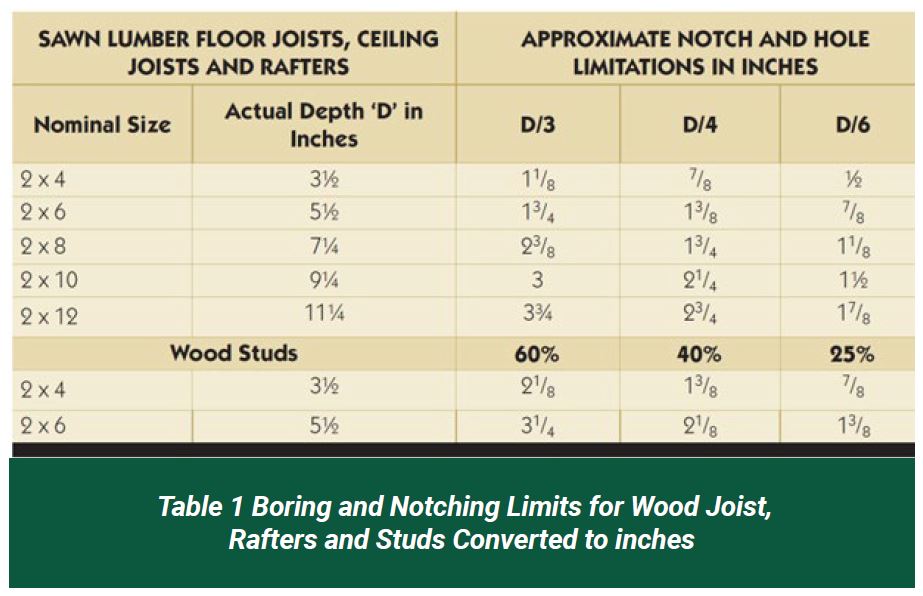
Structural Floor Members
Section R502.8 states that structural floor members are not to be cut, bored, or notched in excess of the limitations specified. Whenever you cut a hole or notch in a joist, that joist is weakened. Notching should be avoided if possible. Section R502.8.1 Sawn lumber states that notches in solid lumber joists, rafters and beams shall not exceed one-sixth of the depth of the member, shall not be longer than one-third of the depth of the member and shall not be located in the middle one-third of the span. Notches at the ends of the member shall not exceed one-fourth the depth of the member. The tension side of members with a thickness of 4 inches (102 mm) or greater in nominal thickness shall not be notched except at the ends of the members. Additional cutting and notching limitations noted in section R502.8.1 are illustrated in Figure 1 below.
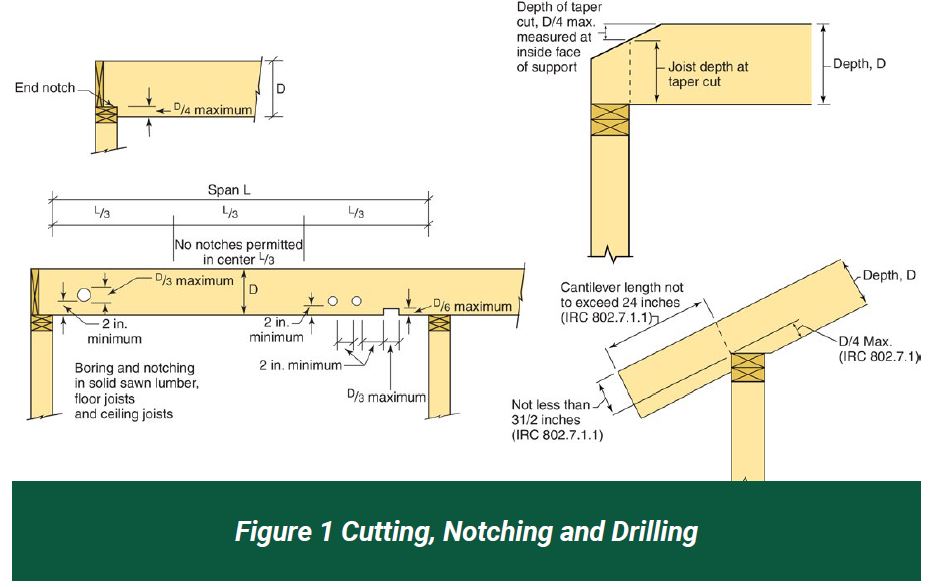
Engineered Wood Products
The cutting and notching limitations in section 502.8.2 for sawn lumber do not apply to engineered wood products. For alterations to engineered products to be acceptable, they must be considered in the design of the member and be allowed by the manufacture as reflected in their use recommendations (which is common with I-joists), or as designed by a registered design professional.
Drilling and Notching of Studs
Section R602.6 addresses the allowable drilling and notching of studs used to frame partitions. See Figures 3 and 4 for examples of permitted drilling and notching of studs in exterior walls, bearing walls and nonbearing walls. These limitations preserve the structural integrity of the studs.
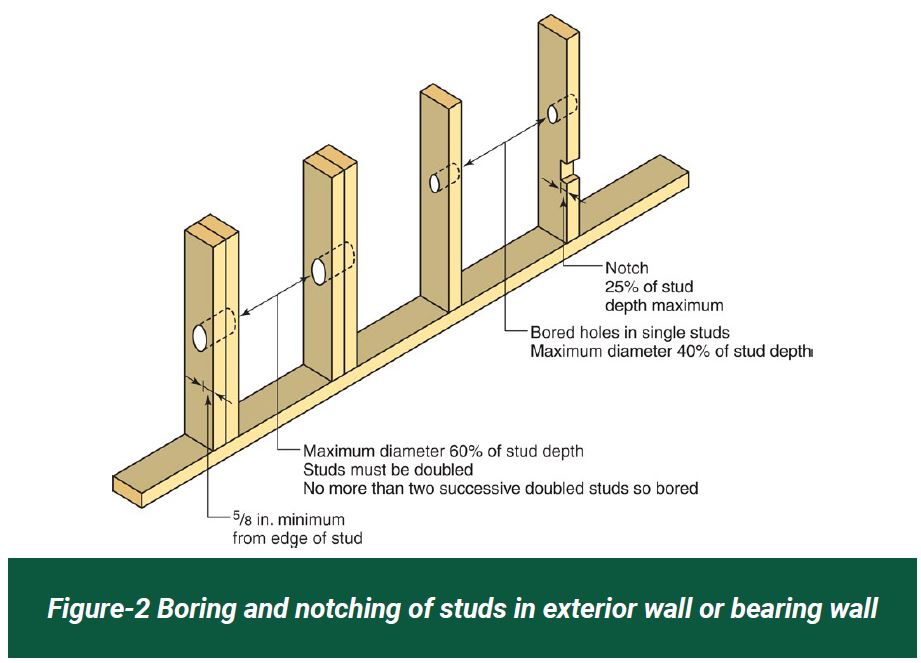
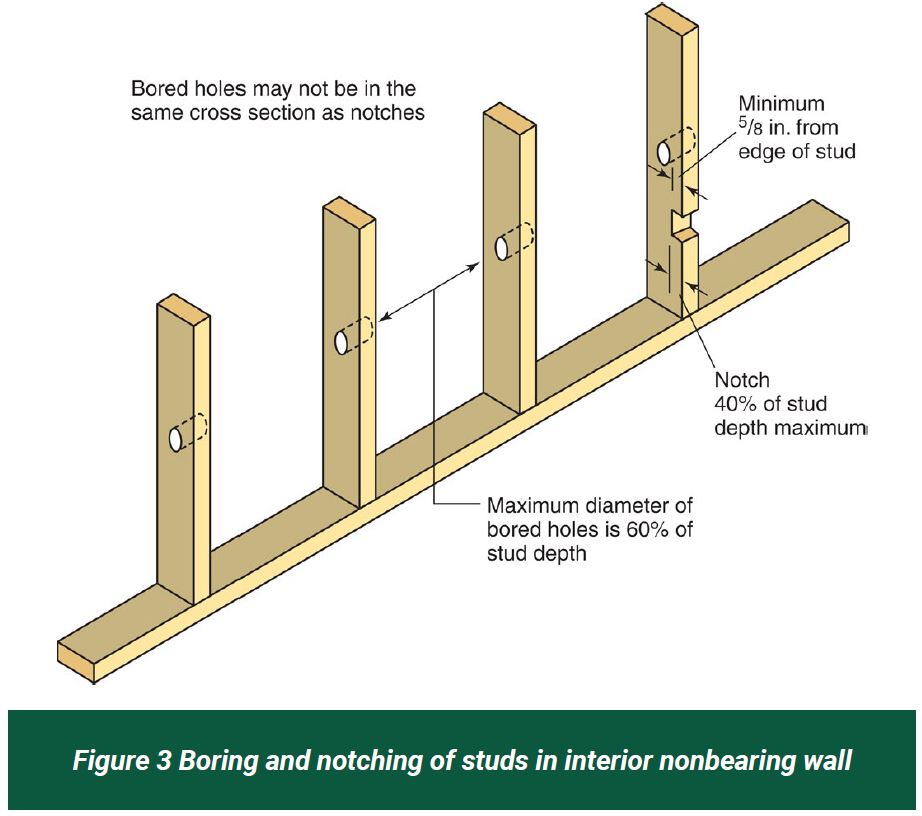
Where stud shoes are used, the exception noted in section R602.6 allows drilling and notching to be in accordance with the approved manufacturer’s instructions.
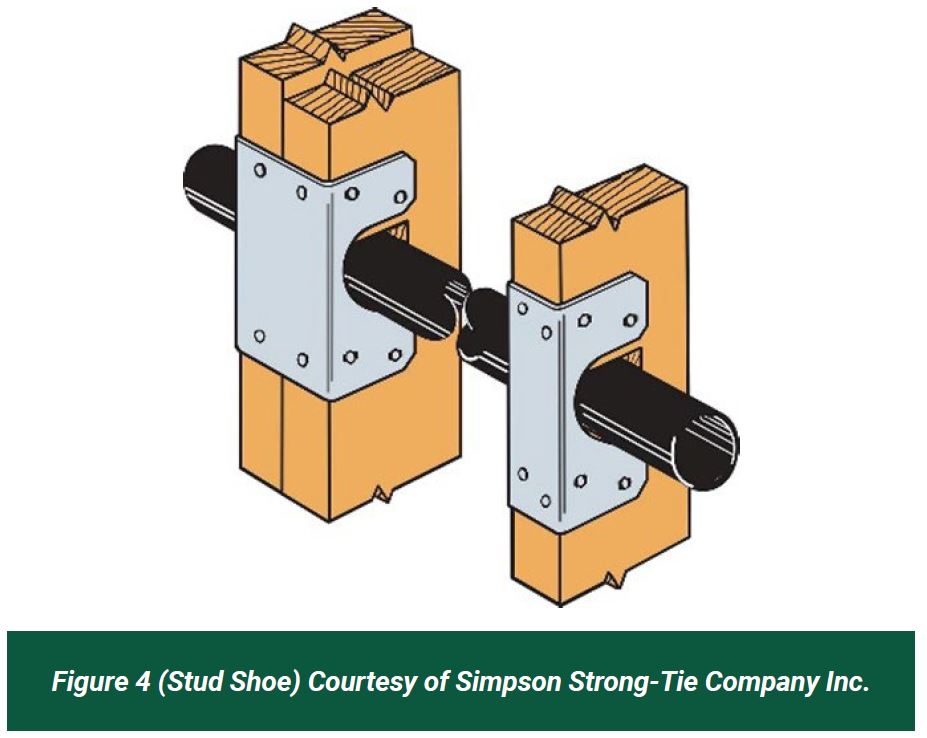
There are many situations where drilling or notching of the top plate is necessary to allow plumbing, heating, electrical or other pipes to be placed within the exterior walls and load-bearing interior walls. Section R602.6.1 requires that when cutting, drilling or notching the top plate by more than 50 percent of its width, a galvanized metal tie not less than 0.054 inches thick (1.37 mm) (16 ga) and 1-1/2 inches (38 mm) wide shall be fastened across and to the plate at each side of the opening with not less than eight 10d (0.148-inch diameter) nails having a minimum length of 1-1/2inches (38 mm) at each side or equivalent. The metal tie must extend not less than 6 inches past the opening (See Figure 5). The exception in section R602.6.1 would apply when the entire side of the wall with the notch or cut is covered by wood structural panel sheathing.
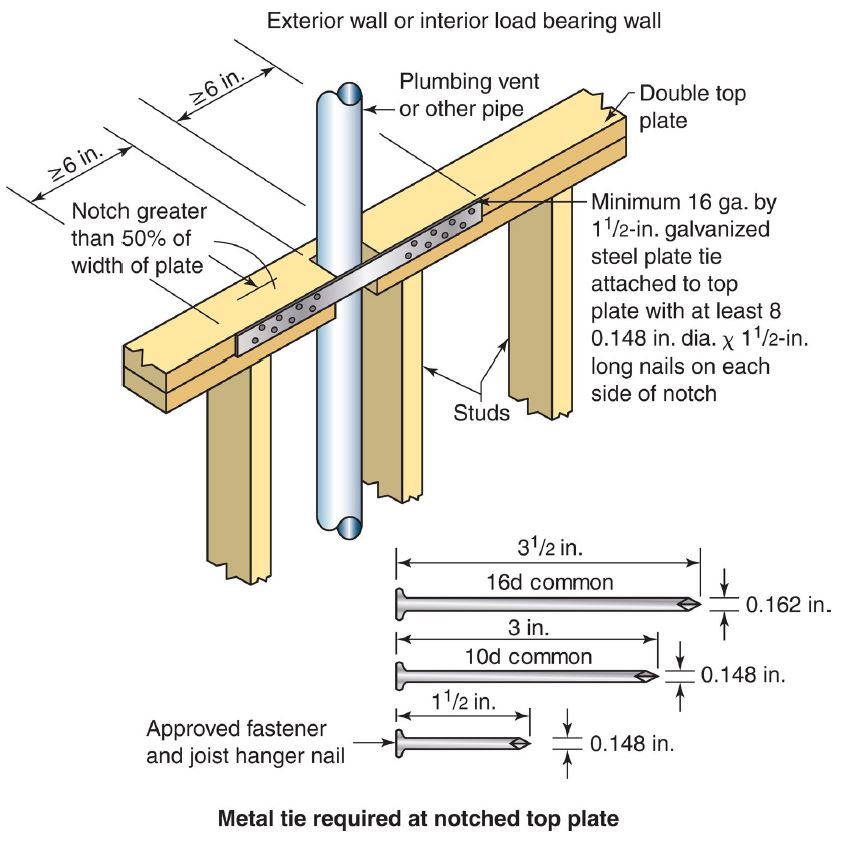
Summary
The code recognizes more than just sawn wood members, commonly called dimensional lumber. Modern building construction includes a mix of “engineered” wood members and assemblies, cold-formed steel light-frame members, structural steel members and log members. To maintain a building’s structural integrity, the load-carrying capacity of these members must not be reduced. If a structural member is modified beyond what is specifically permitted by the code, the member must be replaced with an unmodified member or a structural analysis of that member must be performed, usually by a registered design professional, to verify that the modified member will have the required structural capacity.







